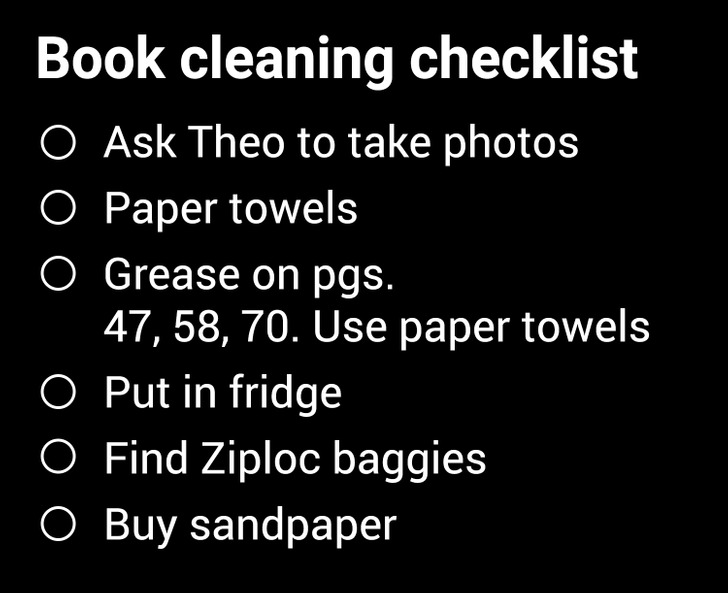How to Clean Books
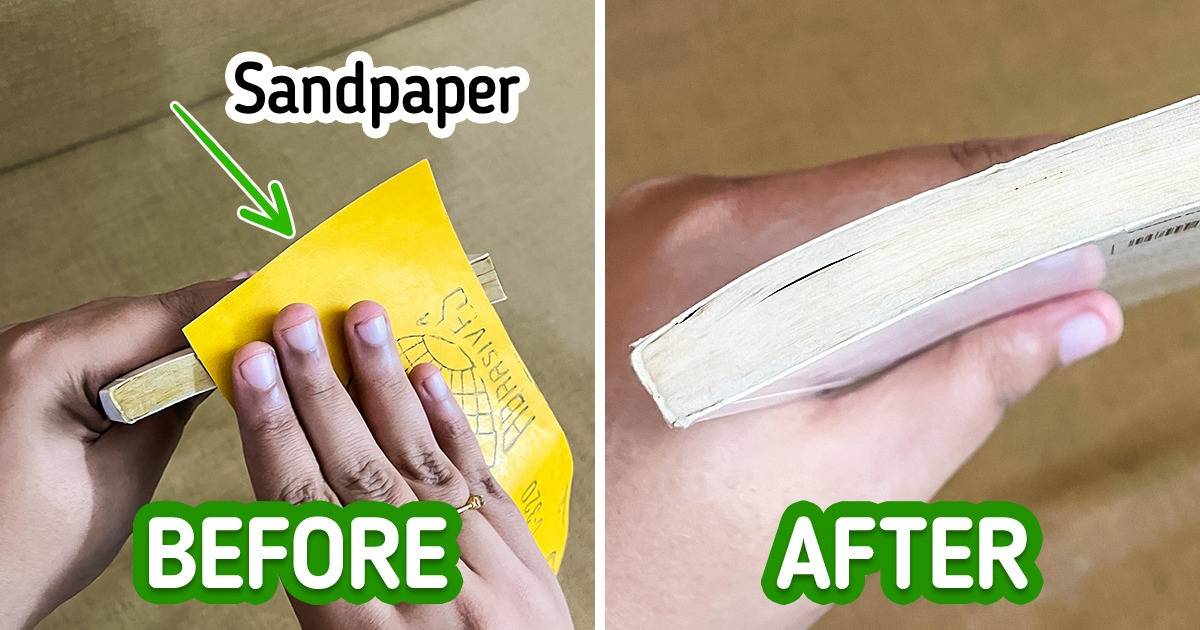
If you have a book that you want to preserve for years or that you want to pass on to your kids, then you must learn how to take care of your books. We usually don’t clean them, but when we do, we need to take special care to not ruin them while trying to keep them in a fresh state. Because you only have 3 options: get them cleaned professionally, buy another cleaner copy, or clean it yourself as suggested by 5-Minute Crafts. Read the tips below if you wish to go with the latter.
Disclaimer: The tips suggested below cannot help you clean and maintain antique books. For those, we highly recommend you take them to a professional.
1. Make a plan.
Before cleaning your books, you need to have a strategic plan on what you want to do to the book. You need to check to see if the cleaning supplies you will use on the book are suitable for them. If you are aware that your book might get damaged by a certain type of cleaner, then make a note to avoid it.
2. Wash your hands before cleaning a book.
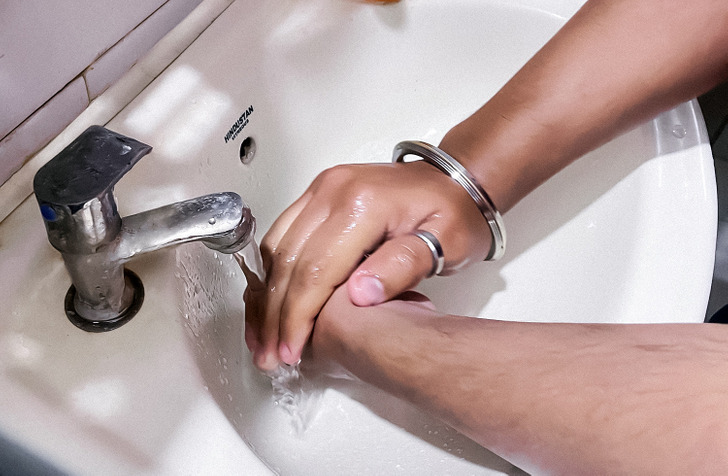
Your hands could be full of germs, grime, and natural oils and you don’t want to get these on your books. Hence, it is recommended that you wash your hands before handling a book.
3. Clean the dust first.
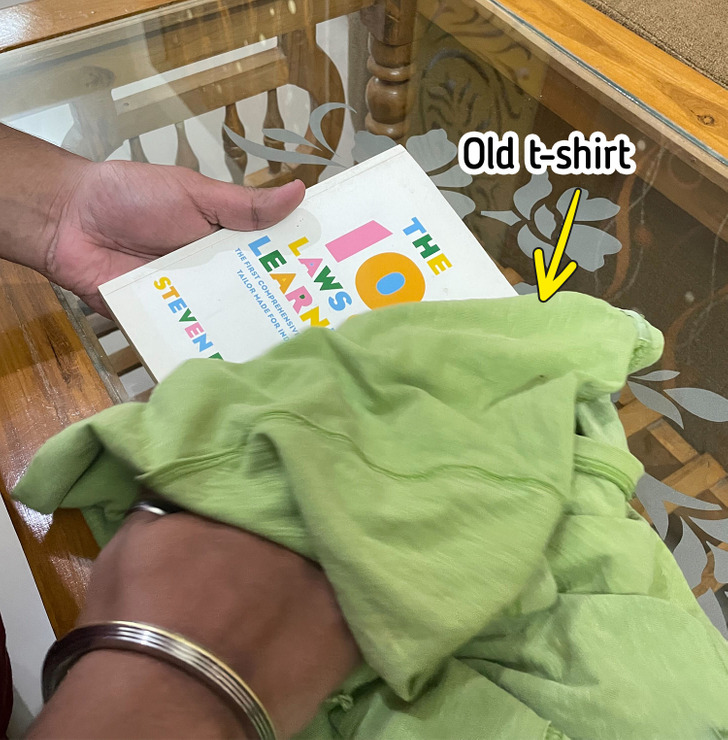
Here you can either use a vacuum hose with a soft-bristle attachment, a soft and lint-free cloth, an old t-shirt, a soft paintbrush, dryer sheets without scents or dyes, or a new soft-bristled toothbrush. If you use a vacuum, put a soft cloth over the hose to soften it even more.
Begin by removing the dust jacket of the book if it has one. Flip the book onto its spine to remove the dust from the binding or the cover. Once done, remove the access dust from inside the book. Be sure to not rip the pages off with the vacuum.
If you have caked dirt on your book, you can also use Document Cleaning pads. All you have to do is squeeze them gently over the affected parts and then scrub it off carefully.
4. Remove the grease and grime.
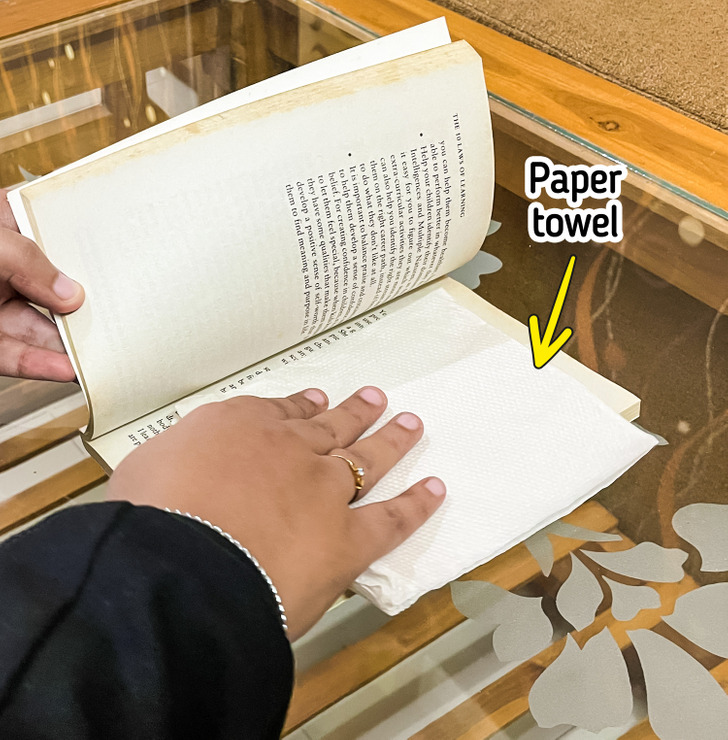
If you notice some stubborn greasy or oily spots on the pages, keep a paper towel between the pages, place the book inside a plastic bag, and put a book weight on the top of a book. Set it aside for 3 days and then remove the paper towel. The greasy stains should get absorbed into the paper towel, and if they don’t, repeat this step until the stain goes away.
If the stain is caused by food spilled on the book, remove that first. If it’s hard to remove, then place the book in the freezer for a day and remove the stuck-on food with the help of a stainless-steel knife. This trick also works if there is chewing gum stuck on the pages.
5. Get rid of pencil marks.
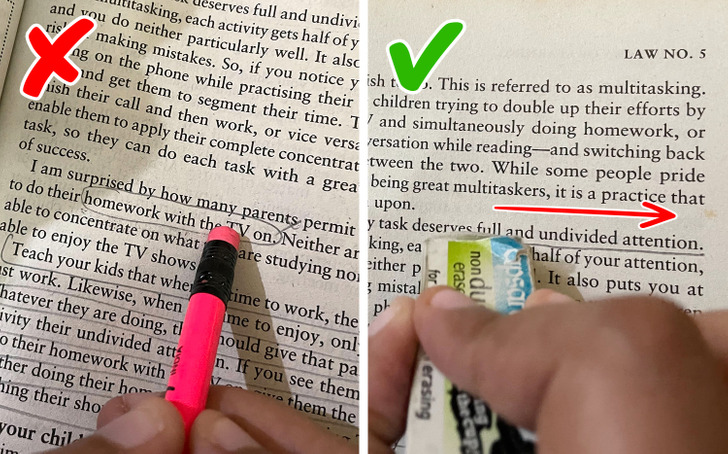
The easiest way to remove pencil marks is to use a white plastic eraser. Rub the eraser over the affected areas gently, in one direction. Avoid rubbing back and forth as it will easily wrinkle or tear the paper. After using the eraser, vacuum the page again to remove the debris.
- Avoid using the built-in erasers on pencils as they may ruin the pages even more.
6. Remove ink and crayon marks.
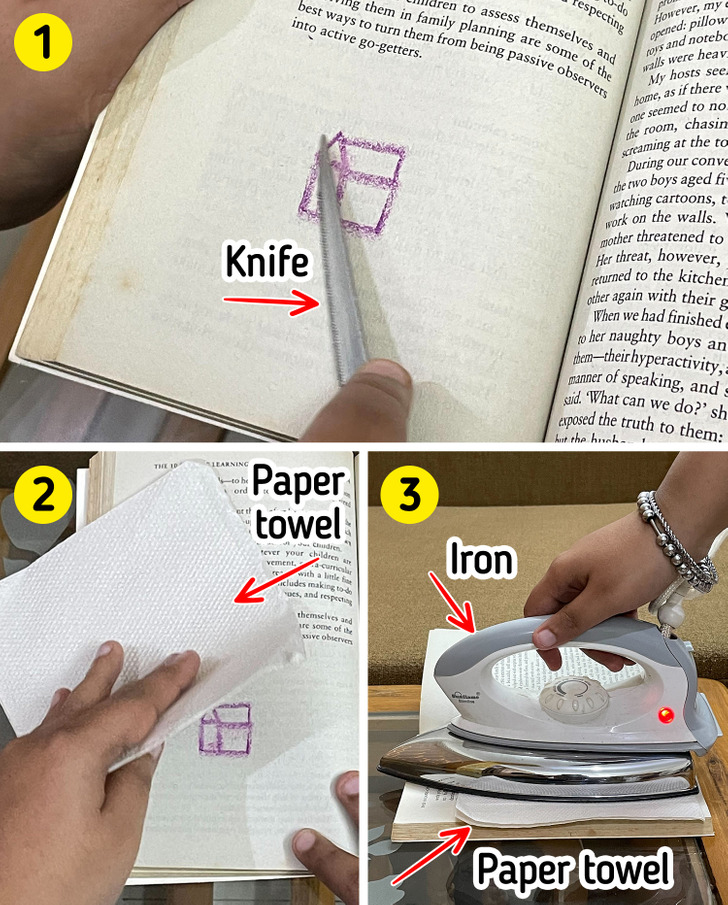
It’s nearly impossible to remove ink marks from books, but you can give it a try by eradicating the marks on the unprinted areas. Use an ink eradicator or nail polish remover on the affected parts. But if the marks are on the printed parts, then find another copy of the book and get the exact page photocopied. Then remove the affected page and try to reattach the clean replacement. Note that if the page is printed on both sides, this entire process can be tricky.
If a child did a crayon drawing on your books, then the best you can do is remove the excess crayon by carefully scraping it off the pages with a knife. After that, keep a paper towel on both sides of the affected pages and then warm it up with an iron to eradicate some of the wax. This also helps in stopping the wax from spreading to adjacent pages.
7. Fixing damp books
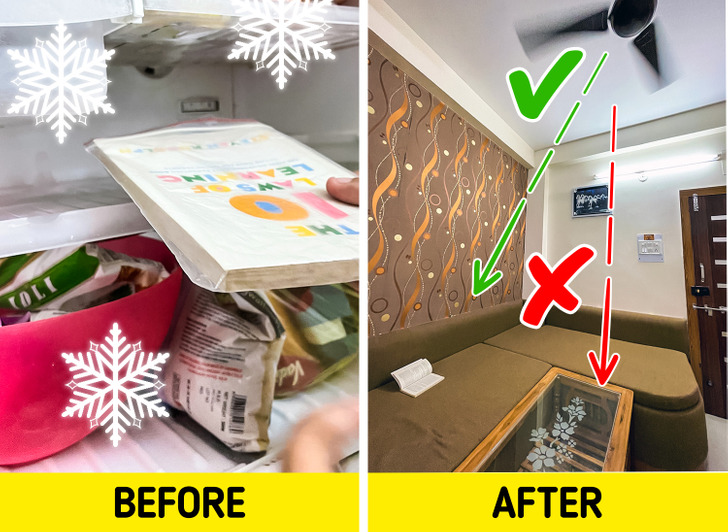
Begin by keeping the book in a sealed bag and then placing it in the freezer. This helps in preventing mold growth. When it’s time to clean it, let the book thaw. Then turn on a fan in a way that the airflow is not directly on the book but near it. When the airflow is direct, it may cause the book to warp and cause uneven drying.
But if your book is dripping wet, then keep something absorbent between every page. The best choice for this is paper towels and you’ll need to change them every 10-15 minutes. Once the book stops soaking, sprinkle some cornstarch between the pages, and then keep it in an airtight container for an hour or 2. Brush away the cornstarch and continue repeating this process until the book is completely dry.
8. Clean the covers.
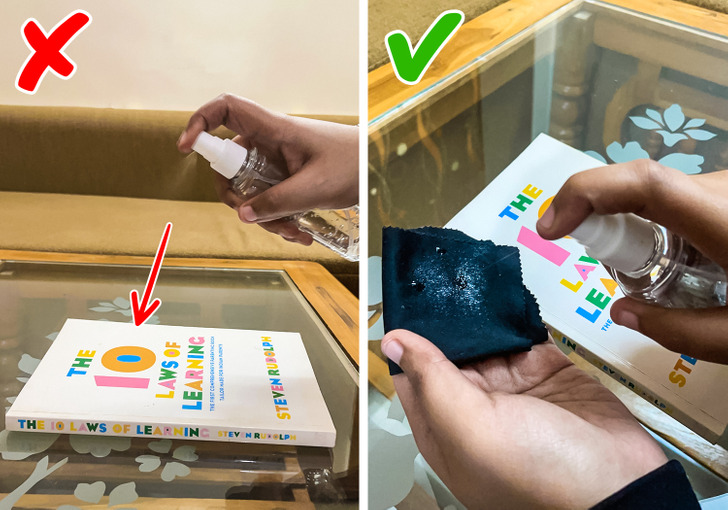
- If the book cover is made of cloth, then art gum is ideal to use. Other options are Absorene and document cleaning pads.
- If the book cover is made of leather, then cleaning it could be risky. Different types of leather react in different ways when the same cleaner is used. Hence, you may need to proceed with caution here. Still, you can give saddle soap and petroleum-based cleaners a try. Make sure to use them in a very small amount. And always clean leather with a dry cloth. If the cover is made of vellum, let an expert handle that.
- If the book cover is made of paper, always use document cleaning pads. Absorene can be used too. Avoid using Windex. Just treat your paper and matte covers in the same way that you treat your book pages.
- If the cover is glossy, then you can try using a glass cleaning solution. Just don’t spray it directly on the cover, spray it on a paper towel or a cloth rag and gently wipe it over the cover to clean it.
9. Clean the fragile book edges.
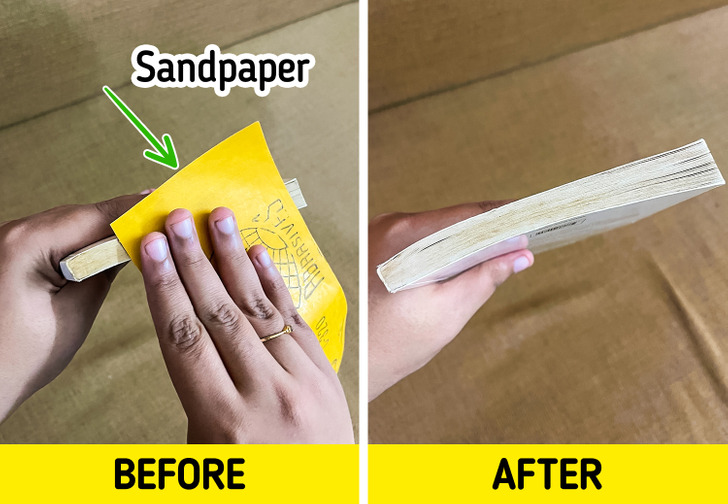
Cleaning the page edges is simpler than you think. You can use sandpaper with a fine grit and rub it gently on the edges. You can also use a soft toothbrush, just make sure it’s a new one and not the one that you use. Another option you can try is a makeup brush.
